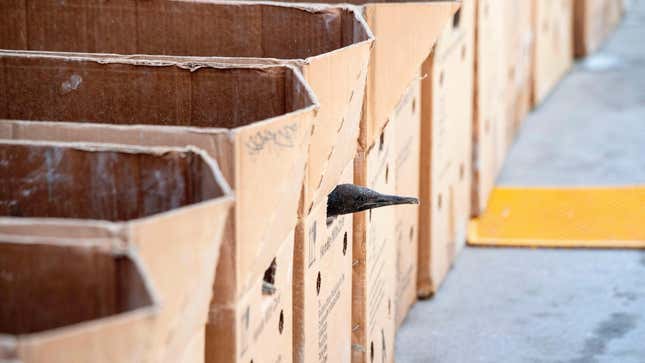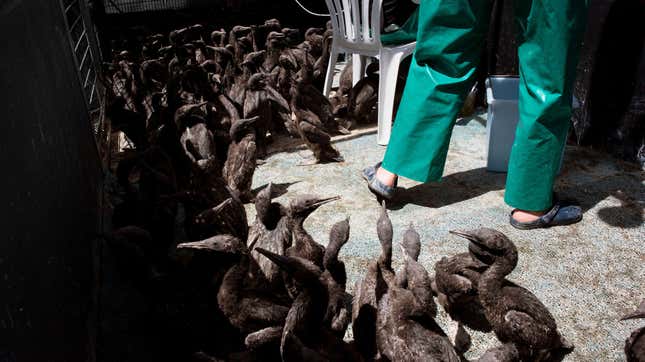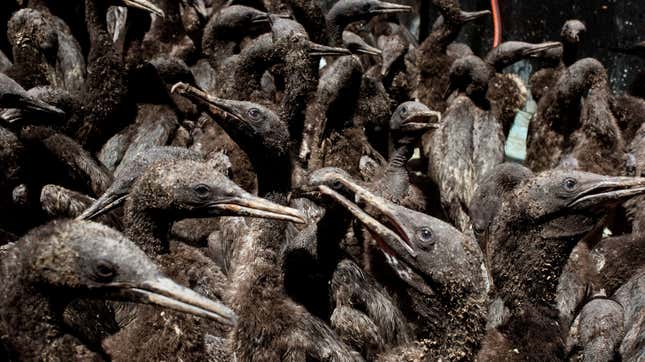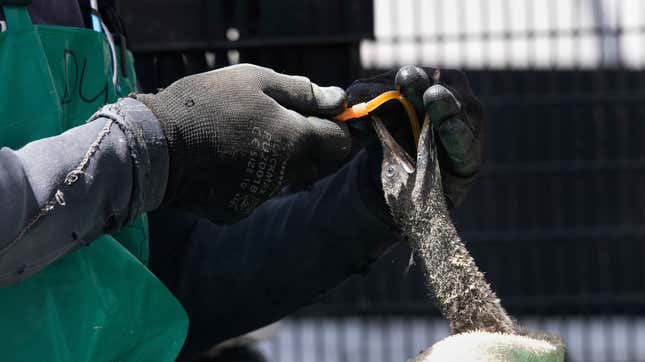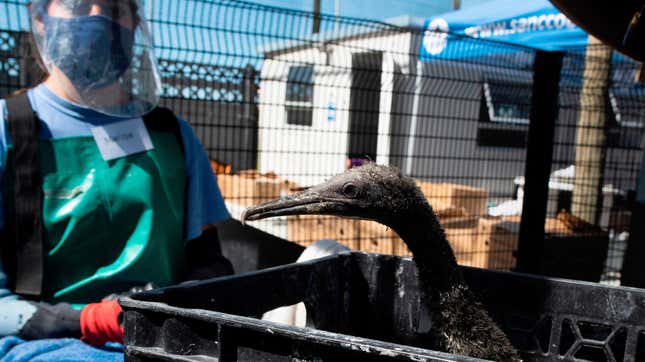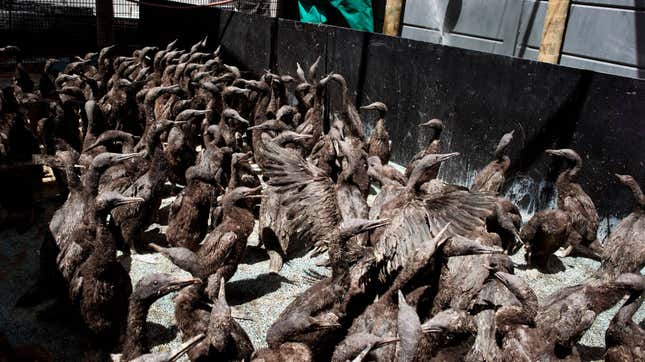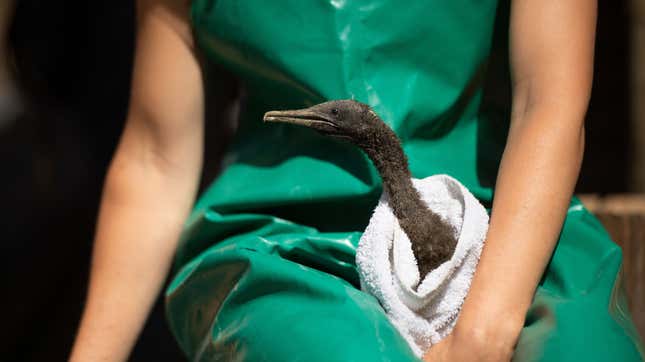
Nearly 1,200 baby Cape cormorants are currently being nursed and cared for by a rescue center in Cape Town, South Africa after being abandoned by their parents on Robben Island last month. The seabirds are considered an endangered species, and were found starving on the island.
Although about 2,000 cormorants were taken to the Southern African Foundation for the Conservation of Coastal Birds, more than 800 died due to weakness and dehydration during the trip to the rescue center or soon after they arrived, AFP reported. In a statement, the foundation explained that when the birds were abandoned by their parents, they were too young to fend for themselves. The rest of the birds have recovered.
